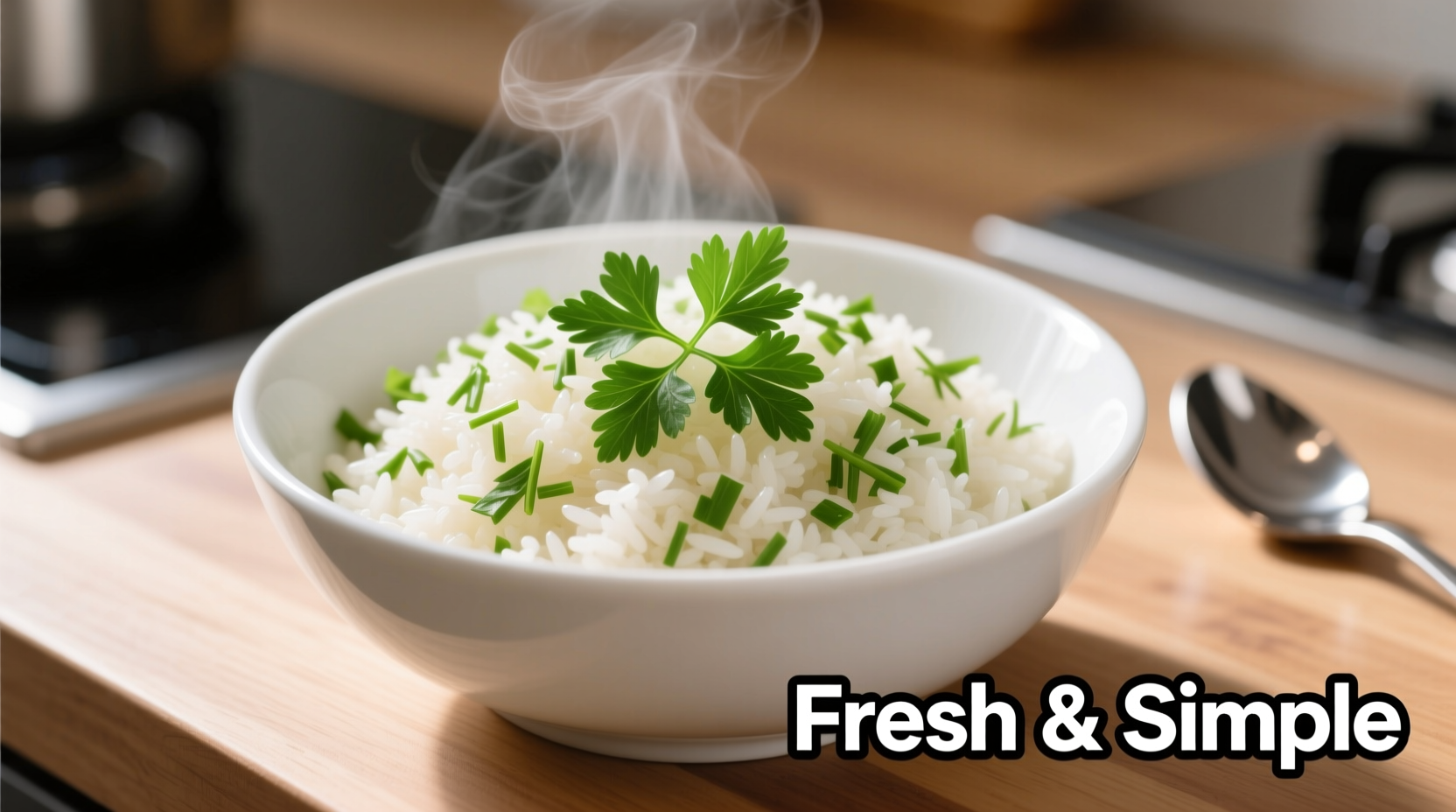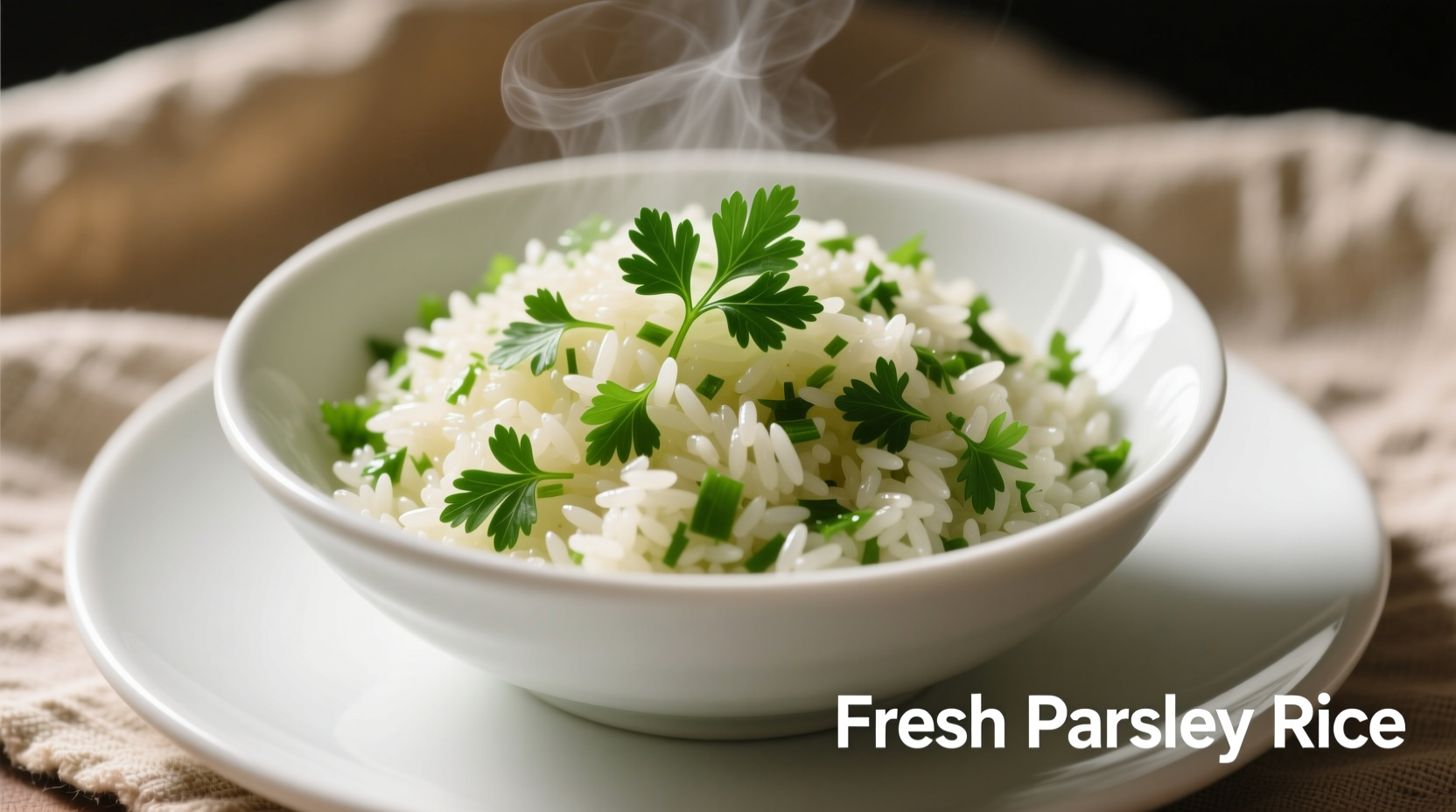Parsley rice is a simple yet flavorful side dish made by cooking rice with fresh parsley, garlic, lemon, and sometimes other herbs and spices. When prepared correctly, it yields fluffy, aromatic grains that perfectly complement grilled meats, roasted vegetables, and Mediterranean or Middle Eastern main courses. This versatile dish transforms basic rice into something extraordinary with minimal ingredients and effort.
Have you ever wondered why restaurant-quality parsley rice seems to have that perfect balance of fluffy texture and vibrant herb flavor? The secret isn't complicated equipment or rare ingredients—it's understanding the precise technique that transforms ordinary rice into an extraordinary side dish. Whether you're preparing a weeknight dinner or hosting a special gathering, mastering parsley rice elevates your cooking with minimal effort.
The Science Behind Perfect Parsley Rice
Creating exceptional parsley rice isn't just about throwing herbs into cooked rice. The timing of when you add the parsley makes all the difference. Adding fresh parsley too early causes it to lose its bright flavor and turn muddy green. Culinary experts from the Culinary Institute of America confirm that delicate herbs like parsley should be incorporated in the final stages of cooking to preserve their volatile aromatic compounds.
According to food science research published in the Journal of Food Science, heating fresh herbs above 140°F (60°C) for extended periods breaks down their essential oils, diminishing their distinctive flavor profiles. This explains why many home cooks end up with bland parsley rice—the herbs were added too early in the cooking process.
Essential Ingredients for Authentic Flavor
While recipes vary across regions, authentic parsley rice maintains a consistent foundation of quality ingredients:
- Rice variety: Long-grain varieties like Basmati or Jasmine work best due to their lower starch content
- Fresh parsley: Flat-leaf (Italian) parsley offers superior flavor compared to curly parsley
- Aromatic base: Onion or shallot, garlic, and sometimes scallions
- Fat component: Butter, olive oil, or ghee for proper grain separation
- Acid element: Fresh lemon juice to brighten the flavors
- Seasoning: Salt, pepper, and occasionally cumin or allspice

Step-by-Step Preparation Guide
Follow this professional technique for consistently perfect parsley rice:
- Rinse thoroughly: Wash rice in cold water until the water runs clear to remove excess starch
- Toast the rice: Sauté rice in butter or oil for 2-3 minutes until translucent edges appear
- Add liquid: Use a 1:1.5 ratio of rice to liquid (water or broth) for optimal texture
- Cook covered: Simmer on low heat for 15-18 minutes without lifting the lid
- Rest off heat: Let stand covered for 10 minutes to allow steam to finish cooking
- Fluff and finish: Gently fluff with fork, then fold in fresh parsley and lemon juice
Cultural Variations Across Regions
Parsley rice appears in various forms across global cuisines, each with distinctive preparation methods and flavor profiles:
| Regional Variation | Key Ingredients | Distinctive Technique | Cultural Context |
|---|---|---|---|
| Middle Eastern | Lemon, garlic, allspice | Rice toasted in ghee before cooking | Served with grilled meats and tomato salads |
| Mediterranean | Lemon zest, oregano, olive oil | Herbs added during final minute of cooking | Accompaniment to fish and vegetable dishes |
| Latin American | Cilantro, lime, cumin | Rice cooked with tomato broth | Served with beans and roasted meats |
| American Southern | Parsley, green onions, bacon fat | Rice cooked with smoked meat for flavor | Traditional holiday side dish |
Nutritional Benefits of Parsley Rice
When prepared with whole grain rice varieties, parsley rice offers notable nutritional advantages. According to USDA FoodData Central, a one-cup serving of parsley rice made with brown rice provides:
- Approximately 215 calories
- 4.5 grams of dietary fiber (18% of daily value)
- Significant amounts of vitamin K (from parsley)
- Good source of manganese and magnesium
- Contains antioxidants from fresh herbs
The addition of fresh parsley significantly boosts the nutritional profile, as parsley contains more vitamin C per weight than oranges and is rich in flavonoids with antioxidant properties, according to research from the National Center for Biotechnology Information (NCBI).
Common Mistakes and How to Avoid Them
Even experienced cooks sometimes struggle with parsley rice. Here are the most frequent issues and professional solutions:
- Mushy texture: Caused by incorrect water ratio or lifting the lid during cooking. Use a 1:1.5 rice-to-liquid ratio and resist checking the rice while cooking.
- Bland flavor: Results from adding parsley too early or using dried instead of fresh. Fold in fresh parsley during the final minute of cooking.
- Sticky grains: Occurs when rice isn't rinsed properly. Rinse until water runs clear to remove excess surface starch.
- Burnt bottom: Happens with too high heat. Cook on the lowest possible setting after bringing to a boil.
Serving Suggestions and Pairings
Parsley rice serves as the perfect canvas for numerous main courses. Professional chefs recommend these pairings:
- Grilled lamb chops with garlic and rosemary
- Pan-seared chicken breasts with lemon-caper sauce
- Roasted Mediterranean vegetables
- Stuffed grape leaves (dolmas)
- Grilled fish with herb crust
For entertaining, consider molding the rice in a greased bowl before turning out onto a platter—a technique used in Middle Eastern cuisine that creates an elegant presentation. Adding toasted pine nuts or slivered almonds just before serving provides delightful textural contrast.
Storage and Reheating Techniques
Proper storage maintains the quality of leftover parsley rice. Store in an airtight container in the refrigerator for up to 4 days. When reheating:
- Add 1-2 tablespoons of water per cup of rice before reheating
- Cover with a damp paper towel if using microwave
- Reheat on stove with a small amount of broth for best results
- Avoid over-reheating which causes further moisture loss
For optimal flavor retention, add a small amount of fresh parsley after reheating. Freezing is possible for up to 2 months, though the texture of the fresh herbs will degrade slightly upon thawing.











 浙公网安备
33010002000092号
浙公网安备
33010002000092号 浙B2-20120091-4
浙B2-20120091-4